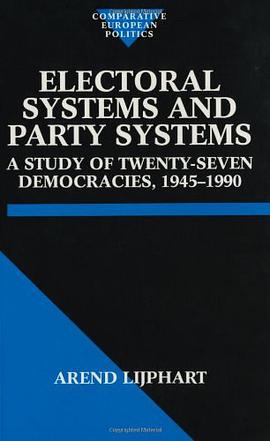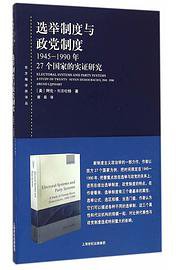Electoral Systems and Party Systems
豆瓣
A Study of Twenty-Seven Democracies, 1945-1990
Arend Lijphart
简介
An electoral system is the most fundamental element of representative democracy, translating citizen's votes into representatives' seats. It is also the most potent practical instrument available to democratic reformers.
This systematic and comprehensive study describes and classifies the 70 electoral systems used by 27 democracies - including those of Western Europe, Australia, Canada, the USA, Costa Rica, India, Israel, Japan, and New Zealand - for 384 national legislative and European Parliament elections between 1945 and 1990.
Using comparative and statistical analyses of these systems, Arend Lijphart demonstrates the effect of the electoral formula used, the number of representatives elected per district, electoral thresholds, and of five other key features of electoral systems on the proportionality of the election outcome, the degree of multipartism, and the creation of majority parties. In the process he reveals that electoral systems are neither as diverse nor as complex as is often assumed.
Electoral Systems and Party Systems represents the most definitive treatment of the subject since Rae's classic study in 1967, based as it is on more accurate and comprehensive data (covering more countries and over a longer time span), and using stronger hypotheses and better analytical methods. The unique information and analysis it offers will make it essential reading for everyone working in the field.
contents
1: Introduction; Goals and Methods
3: Disproportionality, Multipartism, and Majority Victories
4: Changes in Election Rules Between Systems in the Same Country
5: Bivariate and Multivariate Analyses
6: Four Other Potential Explanations
Appendices:
7: Electoral Engineering: Limits and Responsibilities
Appendices
A: Proportional Representation Formulas
B: Indices of Disproportionality and Party System Characteristics
C: Data: Sources, Additions, Corrections, Clarifications

